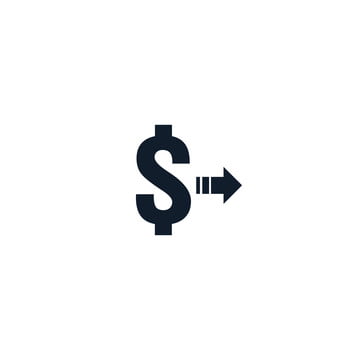Multiple Regression and Stepwise Methods: Pros and Cons

Whether you are starting your first company or you are a dedicated entrepreneur diving into a new venture, Bizfluent is here to equip you with the tactics, tools and information to establish and run your ventures. Suppose you’re operating a food truck selling fruit juices made with watermelons, kiwis, mangos, lemons, oranges and a few other fruits. Since all of these fruits will spoil over time, controlling waste is important, and the amount of each fruit to buy every day for inventory is a critical decision.

For example, after seeing a particular television advertisement slot, we can predict the exact number of businesses using that data to estimate a maximum bid for that slot. The finance and insurance industry as a whole depends a lot on regression analysis of survey data to identify trends and opportunities for more accurate planning and decision-making. Please note, in stepwise regression modeling, the variable is added or subtracted from the set of explanatory variables. The set of added or removed variables is chosen depending on the test statistics of the estimated coefficient. In this way, regression analysis can be a valuable tool for forecasting sales and help you determine whether you need to increase supplies, labor, production hours, and any number of other factors.
Understanding & Implementing XGBoost – A Machine Learning Algorithm In Data Science
Please note logistic regression does not need a linear relationship between a dependent and an independent variable, just like linear regression. Logistic regression applies a non-linear log transformation for predicting the odds ratio; therefore, it easily handles various types of relationships between a dependent and an independent variable. Please note that multiple linear regression has more than one independent variable than simple linear regression. Thus, linear regression is best to be used only when there is a linear relationship between the independent and a dependent variable. Multiple regression models have wide applicability in predicting the outcome of patients with a variety of diseases.
- Therefore, an in-depth survey questionnaire intended to ask consumers the reason behind their dissatisfaction is definitely a way to gain practical insights.
- For example, you can test whether the effect of advertising on sales varies depending on the price of the product.
- The analysis is relatively straightforward — using historical data from an ad account, we can use daily data to judge ad spend vs conversions and how changes to the spend alter the conversions.
- Model fitting and tuning parameter selection by tenfold CV were carried out on the training data.
- Regression analysis is generally used interchangeably with linear regression.
- Their variances are large which deviates the observed value far from the true value.
If your outcome variable is not numeric, then you should consider looking into other types of regression models. This article starts out with a discussion of what kind of outcome variables linear regression is typically used for. After that, some of the main advantages and disadvantages of linear regression are discussed. Finally, we provide specific examples of scenarios where you should and should not use a linear regression model. Let us now understand the concept of dependent and independent variables.
How regression analysis derives insights from surveys?
Credit card companies use regression analysis to analyze various factors such as customer’s risk of credit default, prediction of credit balance, expected consumer behaviour, and so on. With the help of the analyzed information, the companies apply specific EMI options and minimize the default among risky customers. Organizations use the Regression Analysis method by making sense of the data and gathering meaningful insights. Business analysts and data professionals use this method to make strategic business decisions.
It allows companies to improve their business performance by concentrating on the significant areas with the highest impact on operations and revenue. Business Analysts build predictions about future trends using historical data. This analysis helps the management sectors in an organization to take practical and smart decisions. The huge volume of data can be interpreted and understood to gain efficient insights. The general idea is that if the deviations between the observed values and the predicted values of the linear model are small and unbiased, the model has well-fit data. The evaluation of relationship between two or more variables is called Regression Analysis.
Top 15 Data Recovery Tools to Know in 2023
There are several benefits to using regression analysis to judge how changing variables will affect your business and to ensure you focus on the right things when forecasting. Before you use any kind of statistical method, it’s important to understand the subject you’re researching in detail. advantage of regression analysis Doing so means you’re making informed choices of variables and you’re not overlooking something important that might have a significant bearing on your dependent variable. Managers exploit the advantages of regression models in finding ways to improve the efficiency of business processes.
Pros and Cons of Using AI for Inventory Forecasting – Global Trade Magazine
Pros and Cons of Using AI for Inventory Forecasting.
Posted: Tue, 30 May 2023 07:00:00 GMT [source]
Sales for this ready-to-eat pastry increased seven times the normal rate before a hurricane. Since regression analysis analyzes the relationship between variables, you will need a dependent variable and a hypothesis about it. For example, the hypothesis can be that all the students in a class score 8+ grade. We would then need some factors that would affect the dependent variable.
Business Continuity and Disaster Recovery (BCDR) Best Practices for 2023
Regression analysis is commonly used when forecasting and forward planning for a business. For example, when predicting sales for the year ahead, a number of different variables will come into play to determine the eventual result. Let’s say you want to carry out a regression analysis to understand the relationship between the number of ads placed and revenue generated. These variables are also called response variables, outcome variables, or left-hand-side variables (because they appear on the left-hand side of a regression equation). When you rely on data to drive and guide business decisions, as well as predict market trends, just gathering and analyzing what you find isn’t enough — you need to ensure it’s relevant and valuable.
- It helps assess the strength of the relationship between the variables and can also model the future relationship between the variables.
- Make sure you pick the right one, and it can unlock the full potential of your data, setting you on the path to greater insights.
- For example, analyzing data from sales systems and purchase accounts will result in market patterns such as increased demand on certain days of the week or at certain times of the year.
- This is a semi-automated process with which a statistical model is built either by adding or removing the dependent variable on the t-statistics of their estimated coefficients.
What are the advantages of regression analysis over correlation analysis?
The main advantage of using regression within your analysis is that it provides you with a detailed look at your data (more detailed than correlation alone) and includes an equation that can be used for predicting and optimizing your data in the future.
